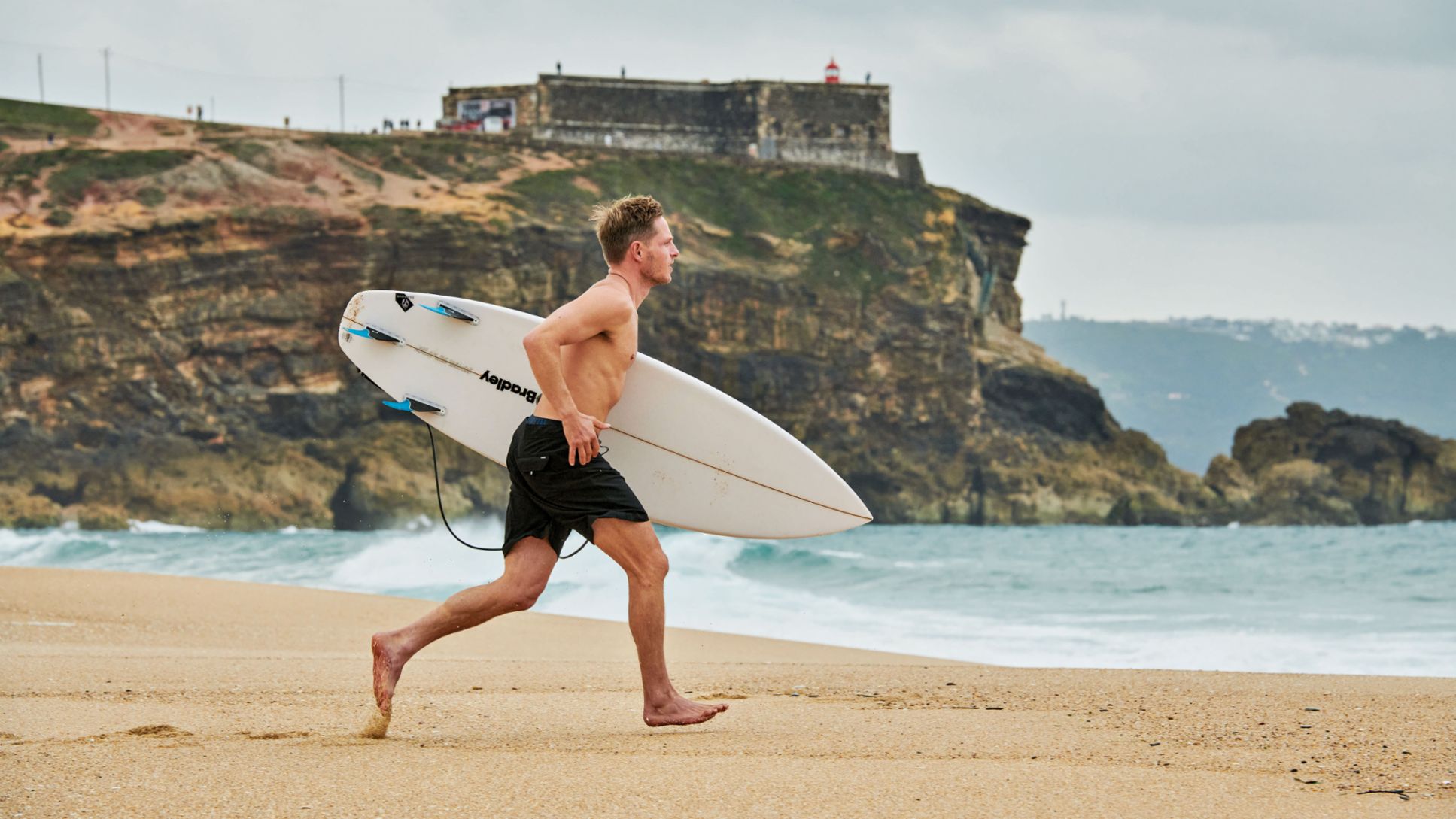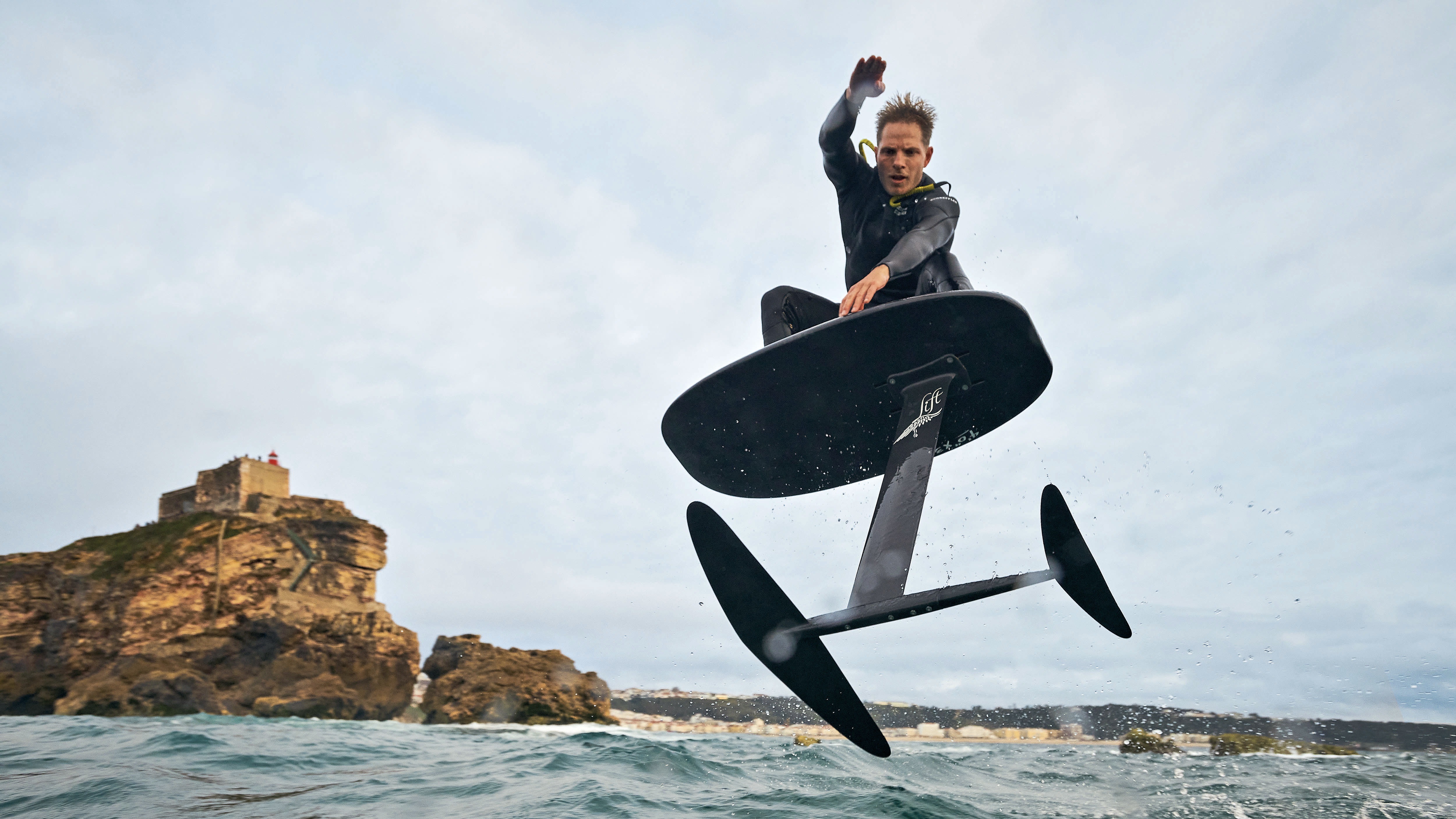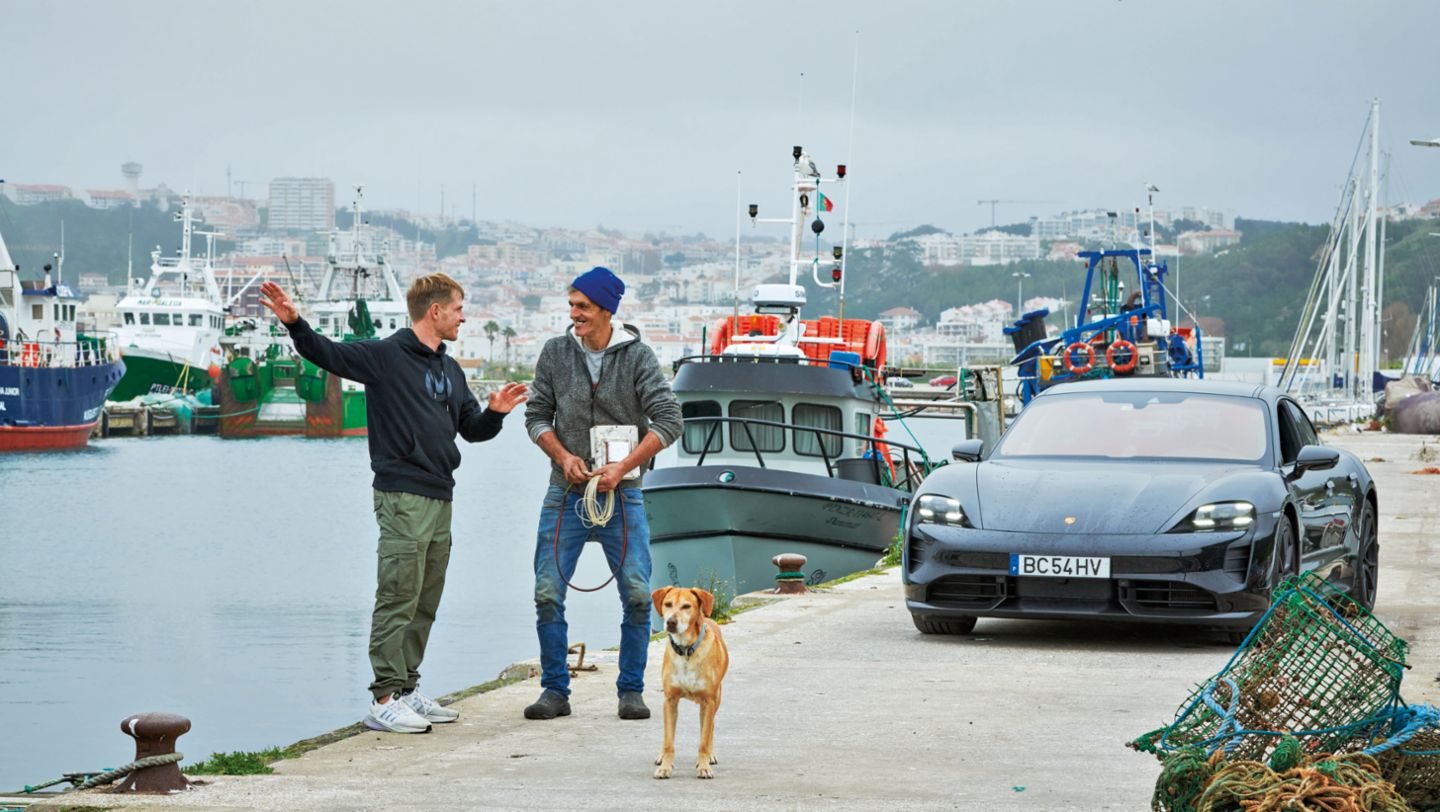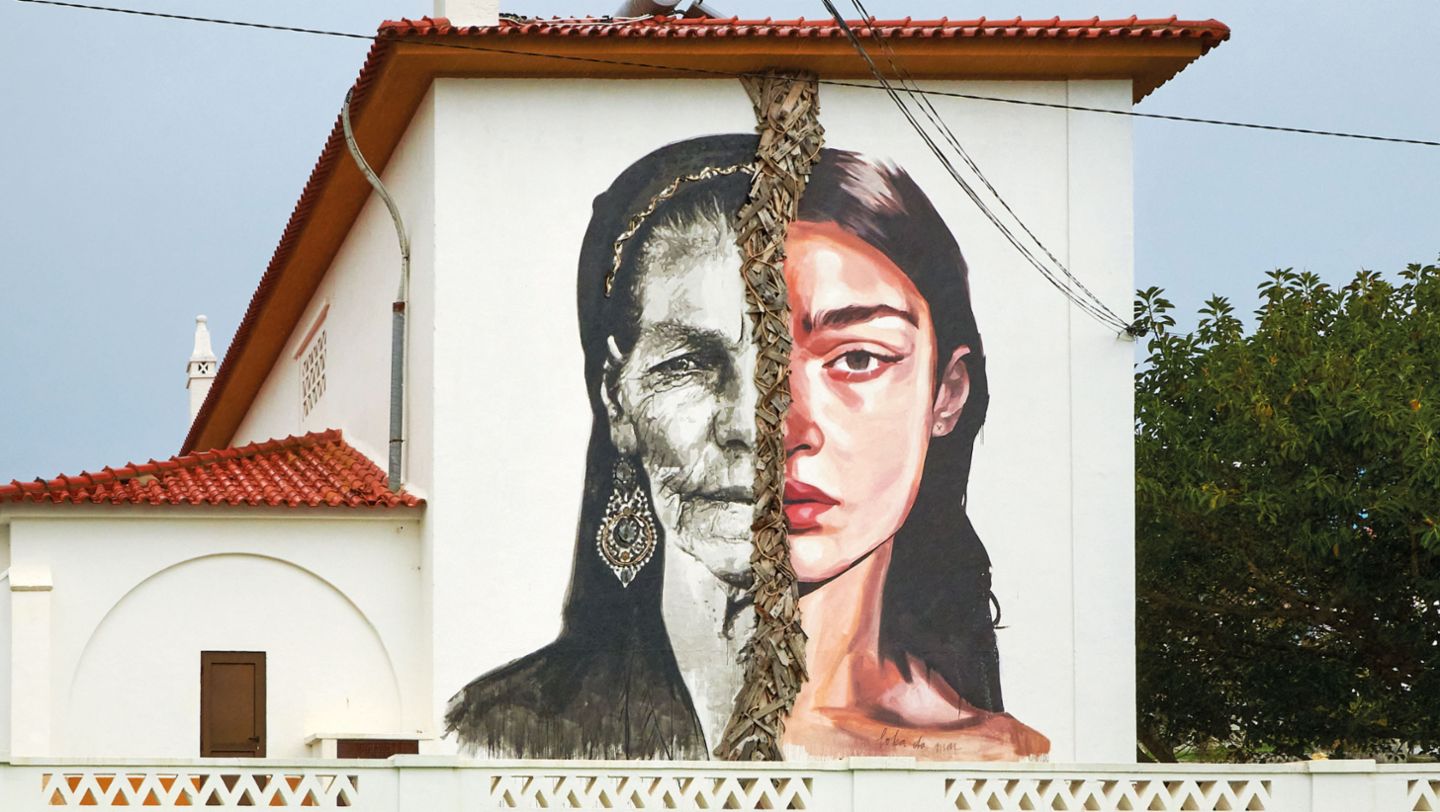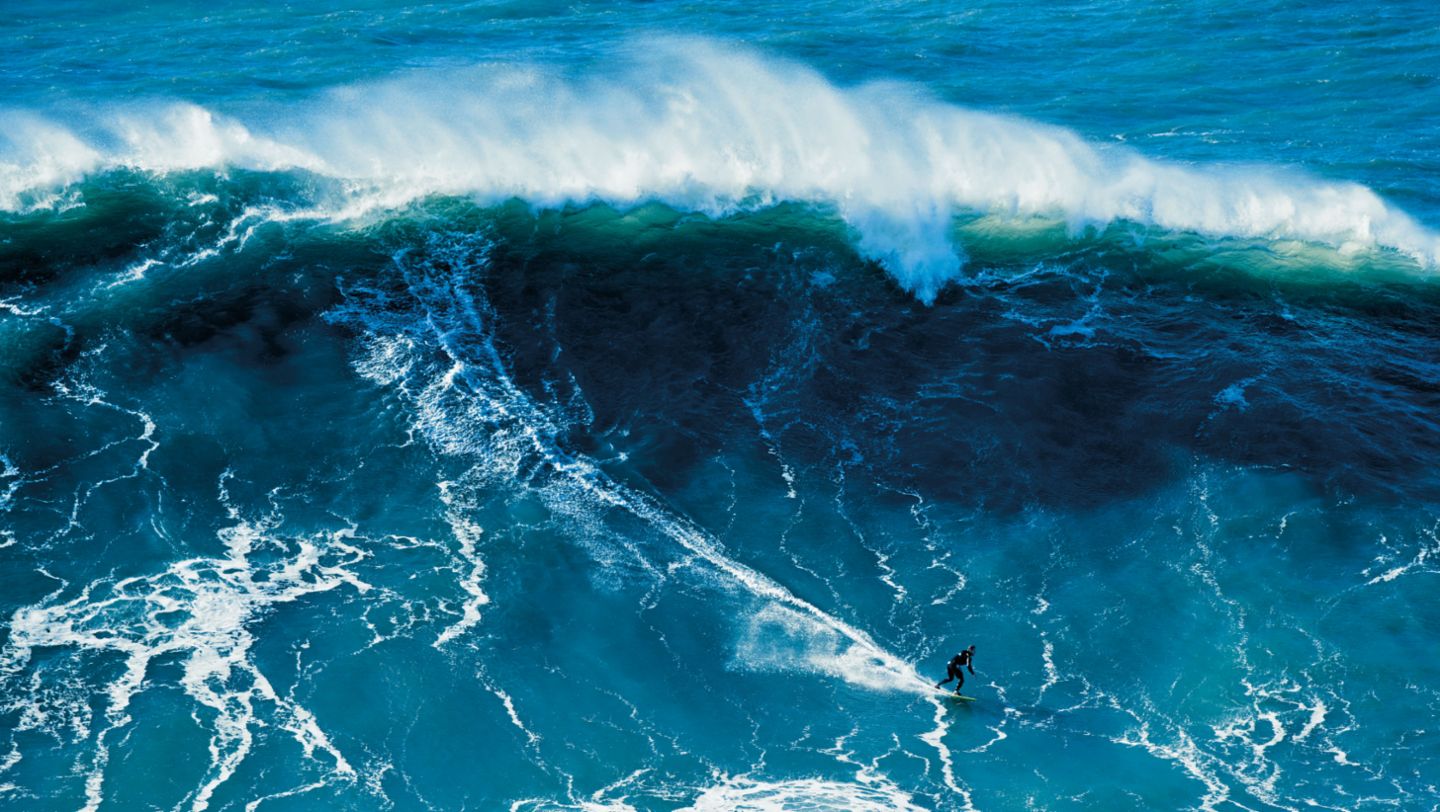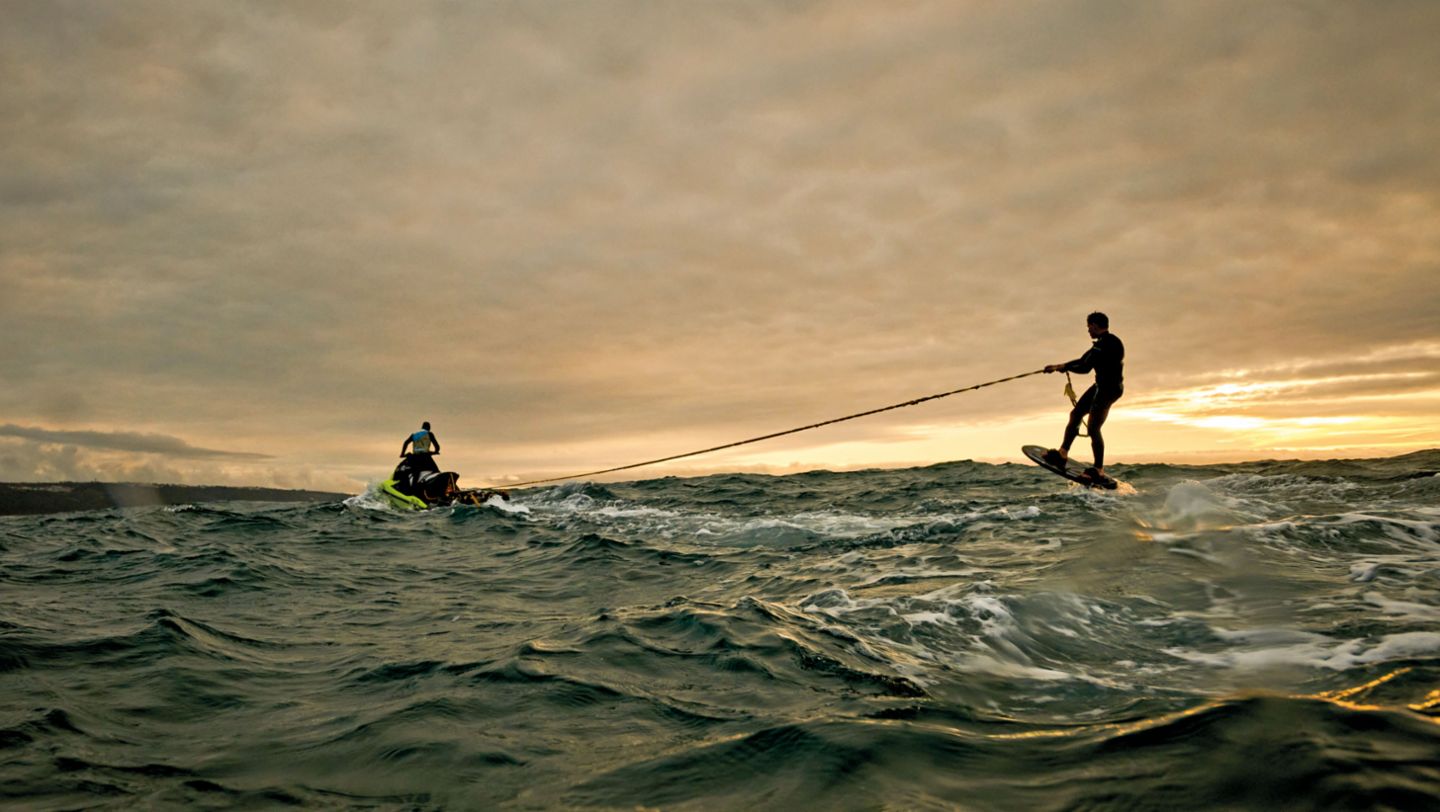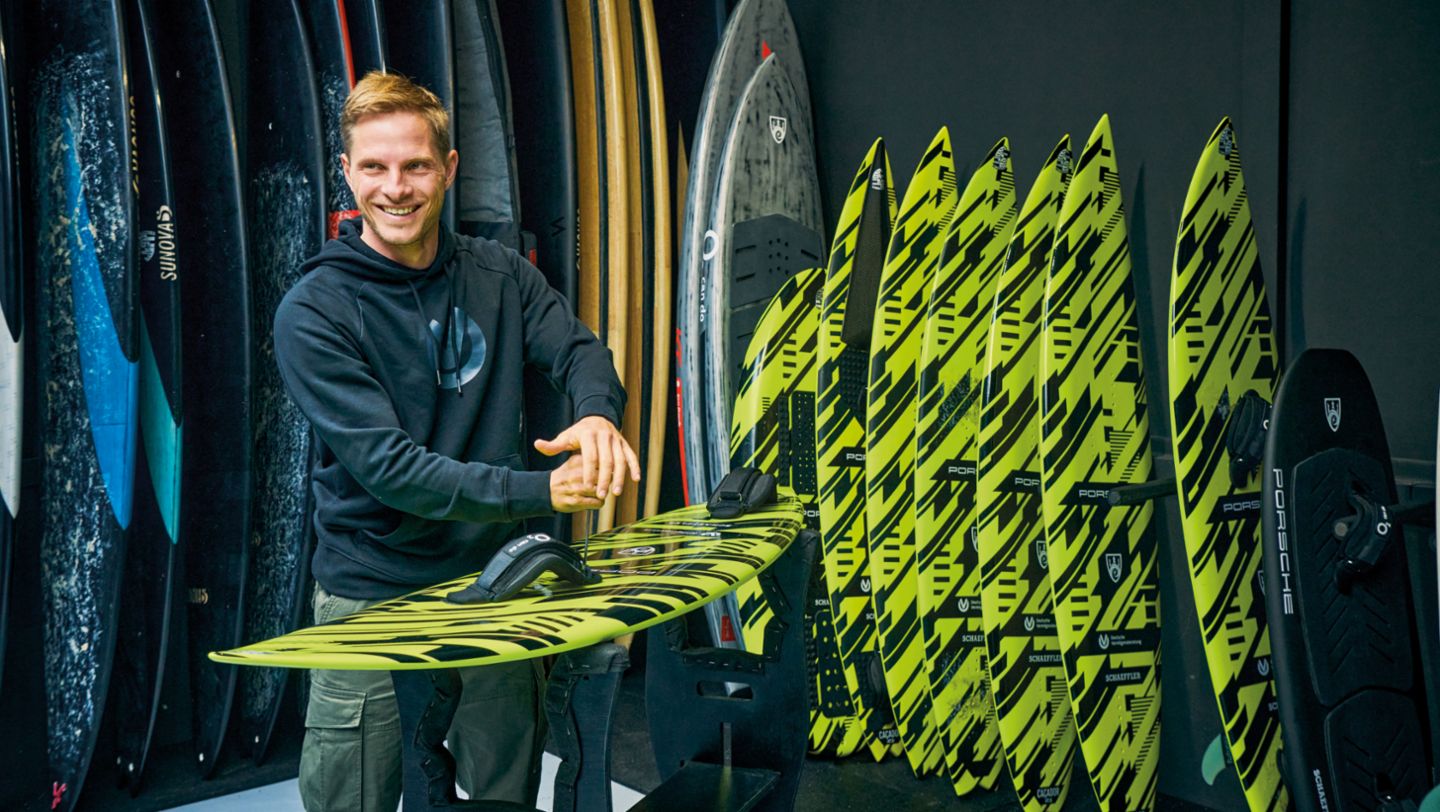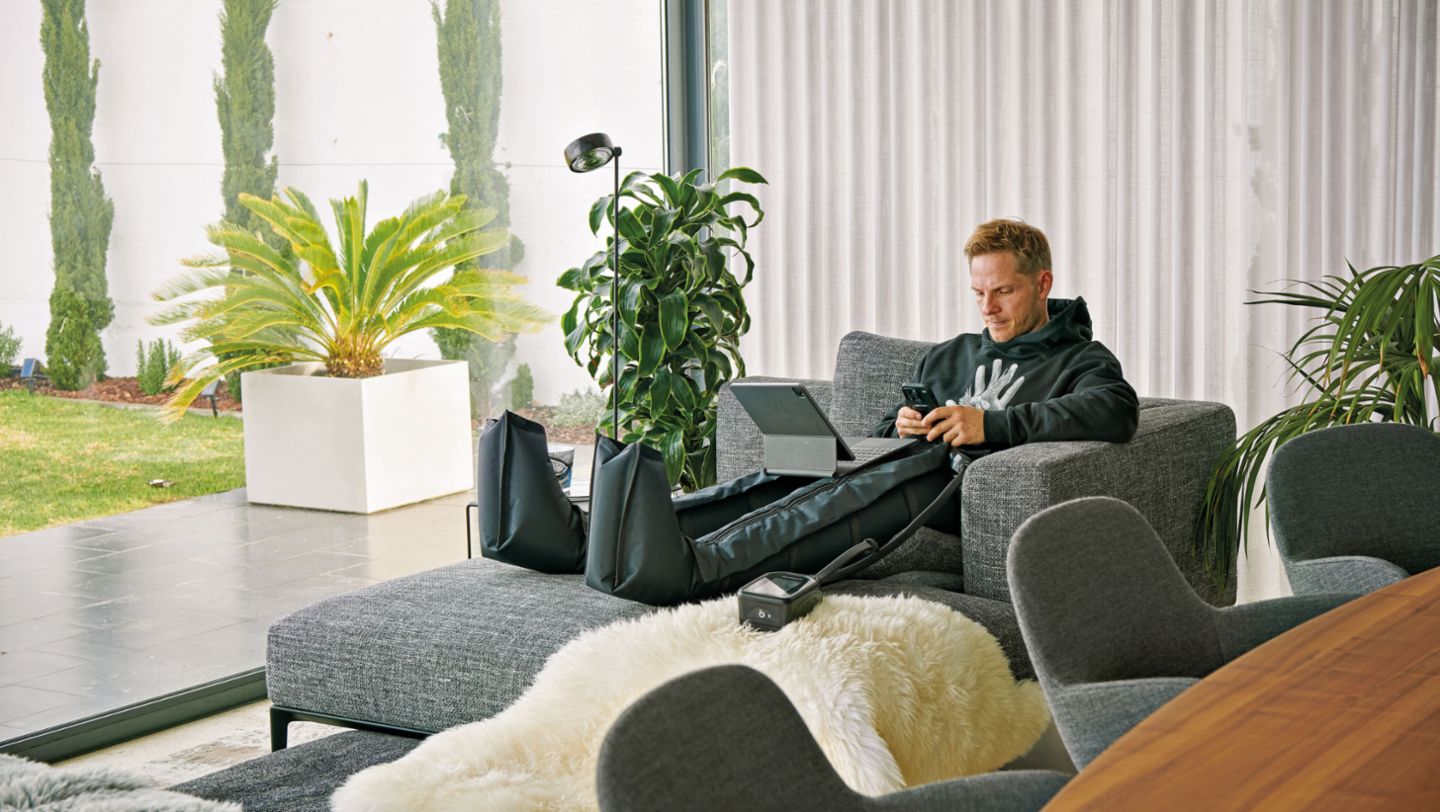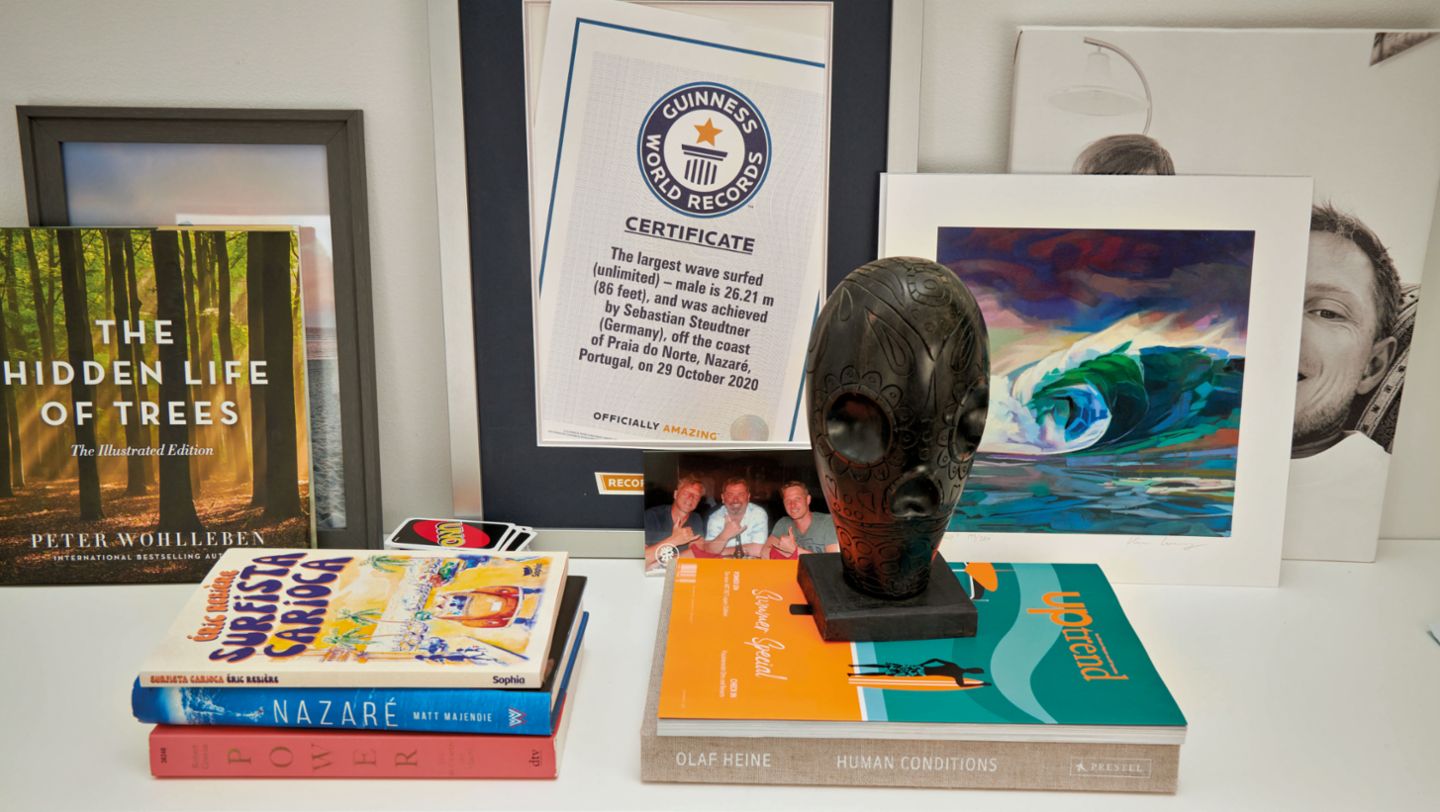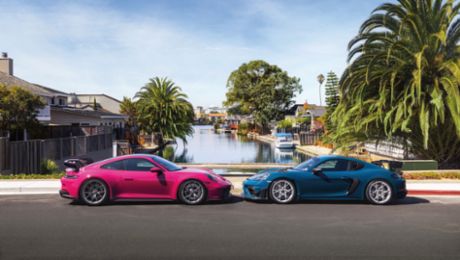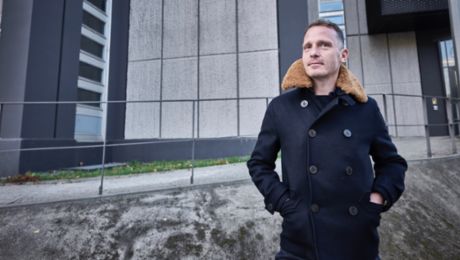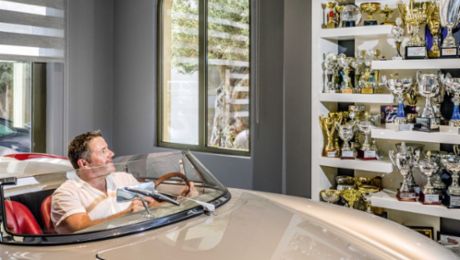When the tourist season comes to an end in Europe, peak season begins for a dedicated community of extreme athletes some 100 kilometers north of Lisbon. There’s a natural phenomenon off the coast of Nazaré, a small fishing village on the Atlantic Ocean.
Massive surges of water come together to form waves like no other the world over. And if you squint hard enough, you can see actual people off in the distance racing down the behemoth waves at maximum speed.
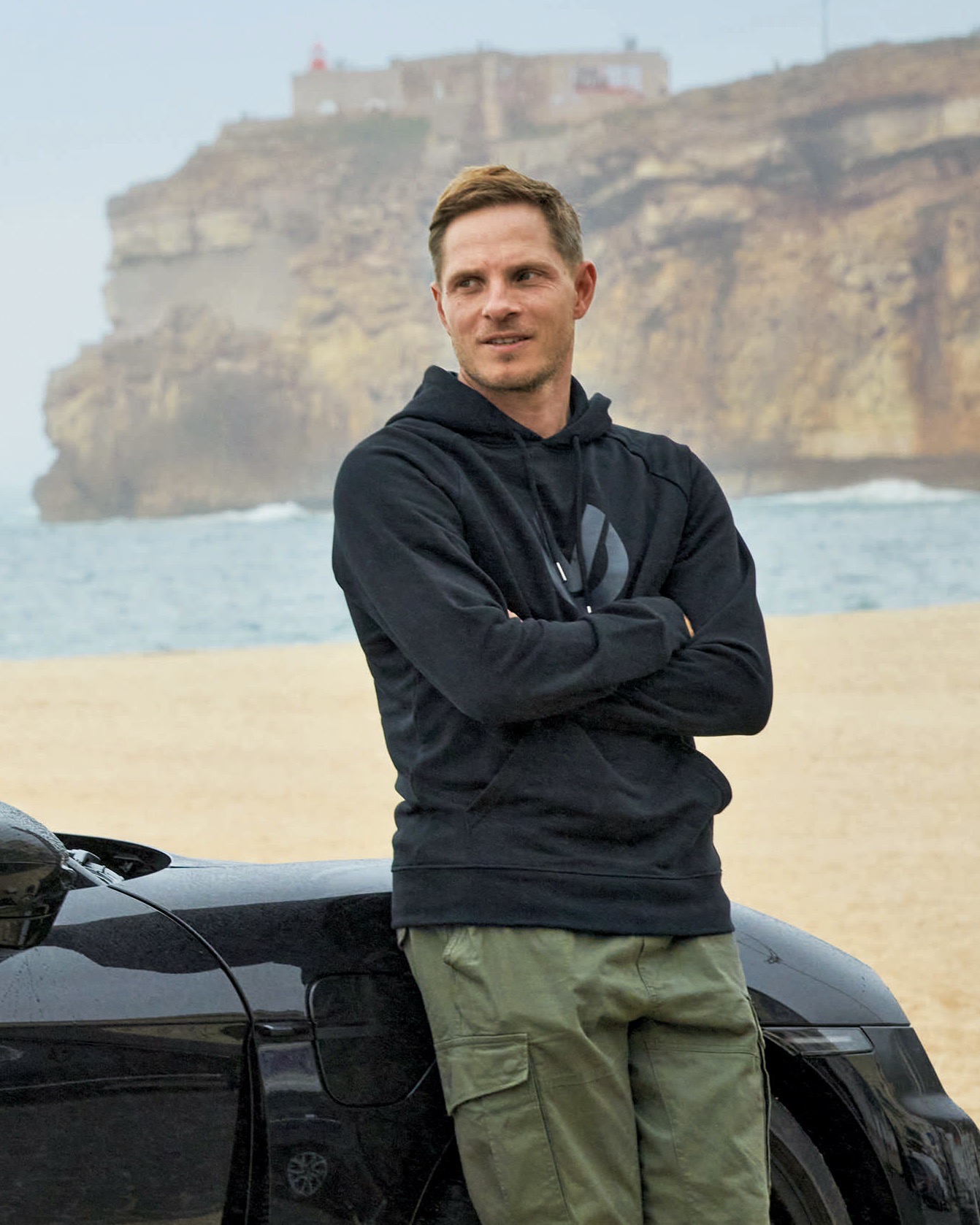
Big-wave surfing is one of the most spectacular extreme sports, attracting daredevils from all over the world to the western coast of Portugal. One of these is Sebastian Steudtner of Germany, who has been spending the winter months here for the past ten years, always searching for the perfect wave. His biggest wave to date was in March 2024 – a monster weighing hundreds of thousands of tons and measuring 28.57 meters in height, which is as tall as a ten-story building. No one had ever ridden a wave this tall before. An achievement that was long considered impossible for a mere mortal. But Steudtner dreamed of more. A lot more. “I want to surf the biggest wave we can find,” says the 39-year-old with an eager look in his eyes.
Pilgrimage site since the Middle Ages
It’s a cold December day when we get together with Steudtner up at the lighthouse, whose iconic images circle the globe any time a new record is set. Built 120 years ago, the structure stands tall at the Fort of São Miguel Arcanjo, which was established in 1577 on the 110-meter-high rocky plateau and offers the best view of the monstrous waves.
The museum inside the fort has a medieval feel to it and houses an exhibition of fascinating photographs of the surfers who have made the location famous over the past decade – and their surfboards. When Steudtner pulls up in front of the fort in his Porsche Taycan GTS, the employees are happy to see him. Everyone knows him here in Nazaré, where he has built his home away from home. It’s a windy day with a thick layer of fog overhead. Not even five meters tall, the few waves roll gently toward Praia do Norte. That is the long sandy beach on the northern side of the cliffs. A few curious onlookers have just happened upon the region’s most popular viewpoint. With no larger waves predicted for the coming days, the beaches are deserted.

In the summer, however, this location in the Costa de Prata region, also known as the Silver Coast, is one of Portugal’s vacation paradises. Tourists flock to the beaches under skies of radiant blue, the beach volleyball courts teeming with activity. “But even in winter, the city is likely to fill up if big waves are in the forecast,” says Steudtner. “There can be up to 30,000 people up here. It almost feels like you’re surfing in a stadium.”
Nazaré has been famous for its natural phenomenon ever since a small group of surf pioneers discovered the spot in 2011 and the pictures of the Portuguese monster waves went around the world every year from then on. Sebastian Steudtner was already one of them back then. And many others followed. But pilgrims have been coming here since the Middle Ages to marvel at the statue of Mary in the Church of Our Lady of Nazaré. By the 19th century, the wooden sculpture had transformed Nazaré into an important pilgrimage site. According to legend, Santuário de Nossa Senhora da Nazaré – the Sanctuary of Our Lady of Nazareth – was carved in the biblical city of Nazareth and served as its namesake in 1912. Once a symbol of religious veneration, Nazaré is now better known for its elemental forces at sea, and has been attracting people for 800 years.
Dreaming the impossible
Sebastian Steudtner devoted himself entirely to his passion 25 years ago. He dreamed of doing something that seemed impossible. The more doubt he encountered along the way, the more driven he was to make it happen. Surfing was not an obvious choice for Steudtner, who grew up in the city of Nuremberg some 500 kilometers from the sea. But when he stood on a surfboard for the first time at the age of nine, he developed a bold plan to pursue the professional sport. And his dream began to take shape when he read about a Hawaiian boarding school for surfing in a magazine at the age of 13.
“When I told my family about it, they reacted just as you’d expect. Yesterday a firefighter, today an astronaut, tomorrow a surfer. I was on my own with my vision and learned early on that I’d have to achieve my goals on my own.” But his parents finally gave in and allowed him to move to Maui when he was 16. Success came fast – Steudtner became a windsurfer, found sponsors, and qualified for the World Cup in the first year. But then came his epiphany.
“I saw the waves breaking, which native Hawaiians refer to as ‘Pe’ahi.’ It was at that moment that I realized I wanted to be a big-wave surfer.” At that time, Pe’ahi, also known as Jaws, was considered the ultimate discipline in the surfing scene. But Steudtner encountered resistance, and his sponsors withdrew from one day to the next. “Everyone agreed that a German could never be successful in this extreme sport.” But once again, he refused to let anything get in the way of his vision and decided to work as a pool builder to finance his dream. And then in 2010, he surfed a 20.10-meter breaker at Jaws, for which he received the XXL Global Big Wave Award for the biggest wave of the season. After nine years in Hawaii, he was one of the world’s best in his discipline. And then suddenly everyone was talking about the Portuguese town with a population of around 10,000.
A location of extremes
Back in Nazaré, the sun begins to peak through the thinning fog, providing a view of the city’s red roofs from up at Miradouro do Suberco. When it’s windy and grey here on the coast, sometimes you can find the sun and radiant blue skies just a few kilometers inland. Nazaré is a location of extremes – both on land and on the water.
The city is divided into two sections, with Sítio, the historical center, located above on the cliffs, and the modern center of town nestled below on the south side, which is where the majority of the population lives today. The two parts of town are connected by the convenient “Nazaré elevator,” a funicular that covers a distance of 318 meters, with a gradient of 42 percent, and has been transporting passengers up the mountain since 1889. Anyone looking for a little exercise can take the stairs instead.
We drive down into town in the Taycan GTS with Steudtner. “For me, it’s the perfect vehicle,” he says on the way down. “I can load up three surfboards and two friends without a problem and drive to the next beach. There’s no point in even talking about the dynamism.” It’s off-season, so there’s not much going on down below. We navigate colorfully decorated alleys, marvel at the tiled houses Portugal is known for, and enjoy “galão” and “pastéis” de nata – espresso with foamed milk and custard tarts - at Café Augusta, a culinary must on any trip to Portugal. The steep roads are reminiscent of the capital city, Lisbon, and all lead down to Praia da Nazaré. Ice cream parlors, cafés, souvenir shops, and hotels line the promenade, which is almost one and a half kilometers long and offers a view of what just might be the most famous lighthouse in Europe.
Colorful boats on the beach call to mind the tradition that Steudtner, too, mentions time and again. “In addition to waves, seafood is another thing this place does best,” he says. “The ceviche at Taverna do 8 ó 80 is amazing.” Some days, you’re likely to see fish drying in the sun on nets set out on the beach, which will then be sold at the market. Today we see the fishermen’s wives in their traditional clothing. In the past, they’d wear seven skirts at once – one for each day of the week – whenever their husbands would go out to sea. Strolling along the promenade, they symbolize a rich tradition that lives on to this day in Nazaré. Fishing has always been their livelihood – and so has the Atlantic, including the danger lurking out there on the high seas. After all, there’s good reason why the sandbank off the coast is referred to as “the sandbank that makes widows.”

Sebastian Steudtner knows this danger better than just about anyone else. But he knows no fear. “You have to do your homework,” he explains. “The days leading up to a big wave are always stressful. Are the jet skis fueled up? Are all the right screws in the board? Has everyone caught their flight? Are the emergency doctors on location? But the moment we leave the port, a sense of calm comes over me. And when I let go of the rope and surf into the wave, it feels like liberation.” Once when he fell off his board, he was pushed so far underwater that he decided to practice free diving, so he’d be better prepared the next time. Today he can hold his breath for up to six minutes underwater. “That’s when I’m calm,” he emphasizes. “What it’ll be like when there’s a big wave would depend on the overall situation.”
Grand Canyon underwater
We reach the fishing port at the southern end of the promenade in the afternoon. There you’ll find surfing schools that offer courses and rent out all the equipment; the Atlantic Safaris company, which offers boat tours for dolphin watching; and old cutter boats bobbing up and down at the berth. This is also where Steudtner’s base is - where he stores his jet skis and gets ready. This is where his fast-paced activities begin.
As is common in tow-in surfing, he leaves the port with a jet ski, a driver, and his board – and is towed out into the waves. You generally only have a few days’ warning before the swell arrives – that’s what it’s called when many smaller waves further out at sea come together to form fewer larger ones. If the forecast looks good, the team of around 17 people, including the mechanic and several jet ski drivers and the emergency doctor, begin to prepare. The fact that waves reach these spectacular dimensions in Nazaré of all places is down to a geological feature you can’t even see. There’s an oceanic trench just behind the lighthouse that’s around 230 kilometers long and five kilometers deep, which is half as long and more than twice as deep as the Grand Canyon. Any time severe storms form on the ocean, these masses of water collide with the angular edge of the underwater cliff – and the waves begin to rise.
There are only a handful of monster waves during the season between October and March. When it’s time, the big-wave surfers slip into their neoprene suits, which protect them from the cold temperatures of the water of around 15 degrees Celsius, and are then towed out into the Atlantic. “On days with big waves, there might be 15 surfers out in the water at the same time,” says Steudtner. There aren’t many other people around the world who have what it takes to tackle the steel-grey monsters exceeding 20 meters in height.
But Steudtner wants more than that. It’s estimated that breakers can reach a height of up to 50 meters in Nazaré. Not even the professional surfer can say exactly how big they get - the waves have been accurately measured, but using photos, a tedious process. It took a record two years to confirm the 2020 world record. “But we’re now starting to measure the height scientifically,” he explains. Recently, a measurement drone developed by Porsche Engineering has been buzzing over the Atlantic on days with bigger waves - and delivers precise results after 30 minutes. Steudtner continues to look for the next record wave. Around three years ago, he launched the first joint project with Porsche Engineering: Mission Wave Alpha. To tackle even bigger waves, he needs to achieve a speed of more than 80 kmh on his board, which is how fast he was going when he set his world record.
Scientific methods have been used to optimize surfboard behavior on the water, also known as hydrodynamics, as well as the aerodynamics of the board and surfer. With his optimized equipment and perfected posture, Steudtner could potentially reach speeds of up to 100 kmh. The name of the new board is “Caçador RS,” which is Portuguese for “hunter.”
Steudtner is perfectly set up in Nazaré. He has everything he could possibly need to train and regenerate at his winter home up on the cliff. And if he wants, he can be down at the water within ten minutes. “Nazaré has become something of a second home to me,” he says, turning his gaze to the lighthouse. “I’ve made a lot of friends here, have a Muay Thai Gym, where I do a lot of training, keep discovering new mountain bike trails, and enjoy my time at the many good restaurants.” And of course his time out on the water, where his true home is. Does someone like him have dreams beyond the waves? “Of course,” he says and smiles. He then climbs into his Taycan and drives up into the hills.
Travel tips for Nazaré
Praia do Norte
Praia do Norte extends over a distance of several kilometers on the northern side of Nazaré’s imposing rocky plateau. Some days, the waves roll right up to the sandy beach. Too dangerous for swimming or bathing, this unsupervised stretch is very popular with surfers.
Marina da Nazaré
Located at the southern edge of town, the old fishing port is home to anything water sport enthusiasts could possibly need for their hobby, from boat tours to surf equipment and jet ski rental. Steudtner also has storage spaces for his materials at the port. With a little luck, you just might see the world record holder preparing for his next mission.
Farol da Nazaré
Whether the sea is rough or calm, an excursion to the lighthouse is a must. It offers a spectacular view, with an interior dedicated to the world of surfing. There you’ll find a small museum with boards and photographs and can learn a great deal about the location’s geological features.
Learn more
Together with Porsche technology subsidiary Porsche Engineering, Sebastian Steudtner has scientifically analysed and significantly optimised his surfboard. The board, dubbed the “Caçador RS”, has been presented to the public for the first time in Cascais, Portugal. Read more here.
Info
Text first published in the Porsche magazine Christophorus 410
Author: Matthias Kriegel
Photos: Olaf Heine
Copyright: All images, videos and audio files published in this article are subject to copyright. Reproduction in whole or in part is not permitted without the written consent of Dr. Ing. h.c. F. Porsche AG. Please contact newsroom@porsche.com for further information.
